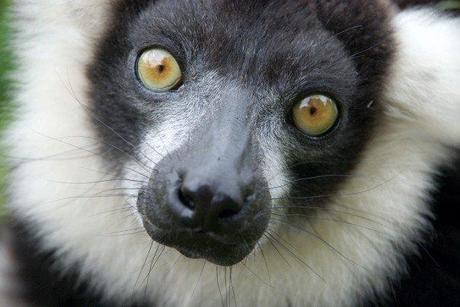
In general the word ‘tradition’ evokes many negative emotions amongst conservationists. We hear ‘traditional medicine’ and think of the thousands of tigers butchered under the ignorant belief that their parts can cure ailments ranging from mouth ulcers to malaria. We hear ‘traditional cure’ and are cursed with the images of rhinos and elephants brutally left to bleed to death under the idiotic conjecture that their horns and tusks increase virility and even cure cancer. Not to mention the threats from ‘traditional symbolism’ and its monochromatic ideas that ingesting shark fin soup promotes wealth, or trophy hunting displays power and supremacy.
With such a storm cloud of negativity it has surprised me to discover that the erosion of some traditions can be just as damaging as many of those that have been preserved.
Malagasy culture generally dictates that animals have souls and can therefore bestow good will, or act vengefully in death. Lemurs penetrate this ideology further in that they are believed to be ancestral humans that when lost in the forest were forced to adapt and diversify. Clans across Madagascar have adopted individual species of lemur as their own individual ancestors, and colourful stories locally known as fadys, dictating how one should act in their presence (usually that killing/eating them is forbidden) permeate history.
Endemic to Madagascar, lemurs are one of the most endangered primate groups in the world. 40% of the 101 taxa are red-listed in one of the threatened categories (Critically Endangered, Endangered or Vulnerable) and a further 45% are recorded as Data Deficient. Since the arrival of humans on the island 2000 years ago, 8 genera and at least 17 species have become extinct. Why then, in a country where tradition dictates the preservation of a species, are those species in decline?
It is widely know that Madagascar has been heavily deforested. Conservatively, an estimated 28,500km2 of primary forest was lost between 1992 and 2011. Much of this deforestation is attributed to industry, and with industry comes migration. A paper published in PLOS one in 2011 investigated lemur exploitation and noted that “Rapid immigration is known to cause social change and is often associated with rapid economic development, such as mineral extraction or tourism, and immigrants to an area are less likely to respect local traditions.” Furthermore, when bush-meat enters the equation, it appears that many migrants and workers that have moved from subsistence farming to other more lucrative work are unknowingly chipping away at tradition in their leisure time “They spend more time in local bars, eating fried meat snacks with their drinks. Lemur hunting appears to have increased to supply this new market. It is also possible that people [especially young adults] who observe someone else consuming (bush-meat) without incurring any visible negative impacts may be more inclined to ignore the fady in the future”.
Culture is dynamic and often replacing tradition with knowledge is a favourable transition, but in this case the beliefs being phased out are the ones that can compliment conservation efforts. In 2006 Madagascar updated their wildlife legislation in accordance with the IUCN and CITES however the cruelty of irony has seen that it is much more difficult to dictate a cultural change than to diffuse into one, and remaining traditionalists do not understand nor accept governance.
I can’t help but feel deeply frustrated. Tradition protected lemurs, Industrial development eroded tradition, science and conservation is now trying to protect lemurs, but tradition defies modern law. For the moment at least, the inspirations for traditions, those beautiful and charismatic lemurs are still a part of our present and I for one won’t stop trying to keep them here. Though it pains me to think that the fadys of the future may talk less of the Indri who joined human souls to the lemurs of the forest, and more of the industries that led human souls astray and lemurs to a desert.
David Attenborough’s Madagascar.
Article image- Jenna Barry, 2008
